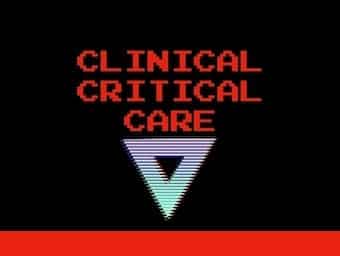
Saving lives from sepsis
RCTs deliver the most reliable evidence to guide how we treat our patients but they are badly designed, inaccurately reported and misunderstood.

RCTs deliver the most reliable evidence to guide how we treat our patients but they are badly designed, inaccurately reported and misunderstood.

Pre-hospital Resuscitation - Road to Resus 1. Ashley and Reuben use a panel of experts to examine some of the major pre-hospital resuscitation controversies including Pre-hospital intubation and blood transfusion.

GENERAL APPROACH Infectious community acquired nosocomial (surgical site, lines, chest, urine, sinusitis) ‘hidden’ sepsis (endocarditis, neuraxial infection, retroperitoneum, sinusitis) Non-infectious head injury VTE drug/toxin SIRS (post surgery, trauma, burns, ICH, aspiration, pancreatitis, CTD) Hypermetabolic syndromes (e.g. thyroid storm, NMS, MH, heat stroke, pheochromocytoma) INTRODUCTION…

Reviewed and revised 17 September 2019 OVERVIEW Initial management of sepsis and septic shock involves consideration of: resuscitation early administration of appropriate antibiotics following blood cultures early source control judicious fluid resuscitation, avoiding excess fluids noradrenaline for refractory hypotension (septic shock) inotropes…

Pregnancy results in increased susceptibility to endotoxin, metabolic acidosis and cardiovascular collapse

Sepsis Literature Summaries

The LITFL Critical Care Compendium (CCC) has numerous entries on sepsis, this page collates them

Febrile neutropaenia (or neutropaenic fever) is defined as: a single temperature measurement >=38.5C, or a sustained temperature >=38C for more than 1 hour; in a patient with a decreased absolute neutrophil count (ANC) of either <0.5 x 109/L, or <1 x 109/L with a predicted nadir of <0.5 x 109/L over the subsequent 48h

Reviewed and revised 8 January 2016 OVERVIEW The Surviving Sepsis Campaign (SSC) is a joint collaboration of the Society of Critical Care Medicine and the European Society of Intensive Care Medicine that seeks to reduce mortality from severe sepsis and septic shock…

Corticosteroids are widely used in patients with refractory septic shock, as well as other selected causes of shock. Despite numerous trials, the role of corticosteroids in septic shock remains a controversial issue... still!

OVERVIEW Organisms Bacteria-> Gram +ve’ cocci (staphylococci, streptococci)-> Gram –ve bacilli (E.coli, Klebsiella, Pseudomonas aeruginosa) Fungi (Candida) Viruses Parasites Complex interaction between inciting microbe host immune response inflammatory pathway coagulation pathway LPS = lipopolysaccharideTRAF6 = TNF receptor-associated factor 6NIK =…

The Septic Child